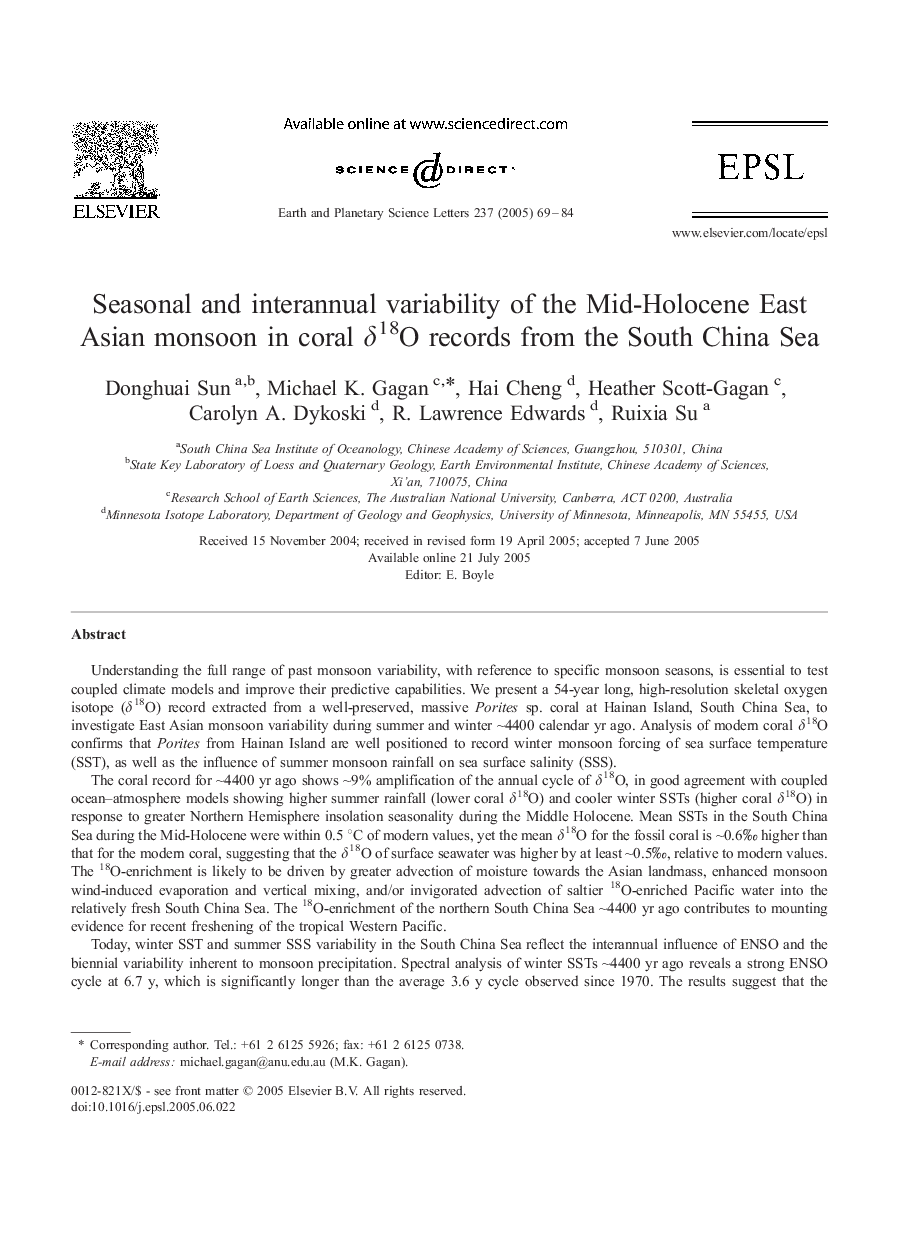| Article ID | Journal | Published Year | Pages | File Type |
|---|---|---|---|---|
| 9522110 | Earth and Planetary Science Letters | 2005 | 16 Pages |
Abstract
Today, winter SST and summer SSS variability in the South China Sea reflect the interannual influence of ENSO and the biennial variability inherent to monsoon precipitation. Spectral analysis of winter SSTs â¼4400 yr ago reveals a strong ENSO cycle at 6.7 y, which is significantly longer than the average 3.6 y cycle observed since 1970. The results suggest that the influence of ENSO on winter SSTs in the South China Sea was well established by â¼4400 yr ago. However, spectral analysis of summer SSS â¼4400 yr ago shows no significant ENSO cycle, suggesting that teleconnections between ENSO and summer monsoon rainfall were restricted. Taken together, the results indicate marked differences in ENSO-monsoon interactions during the winter and summer monsoon seasons in the past. The fossil coral δ18O record also shows that the amplitude of interannual SST and SSS variability was stronger â¼4400 yr ago, despite ENSO variability being significantly weaker in the Pacific region. Thus it appears that the strengthened Mid-Holocene monsoon was sensitive to forces, other than ENSO, that acted as alternative drivers of interannual monsoon variability. If this is the case, greater interannual climate variability could accompany the strengthening of the Asian monsoon predicted to occur during the 21st century as transient greenhouse warming preferentially warms Eurasia, even if ENSO perturbations remain relatively stable.
Related Topics
Physical Sciences and Engineering
Earth and Planetary Sciences
Earth and Planetary Sciences (General)
Authors
Donghuai Sun, Michael K. Gagan, Hai Cheng, Heather Scott-Gagan, Carolyn A. Dykoski, R. Lawrence Edwards, Ruixia Su,
